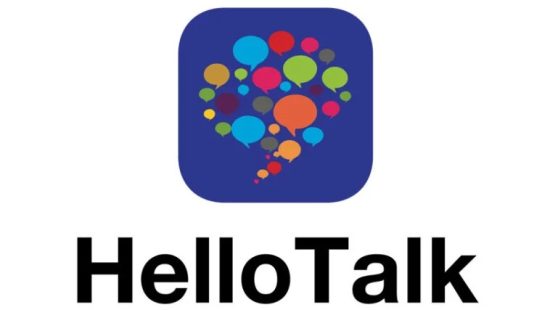
Learning Chinese characters can seem daunting, and many Chinese learners either give up early or don’t even bother to learn Chinese characters. However, with the right methods, and some hard work, learning Chinese characters is achievable. This blog article explores six techniques for learning Chinese characters: mnemonic devices, spaced repetition systems, radical decompositions, writing practice, flashcards, and contextual learning. Using these methods, preferably together, will help you break through the barriers to learning Chinese characters.
We’ll provide a step-by-step breakdown of how to implement each method effectively. We’ll also list the advantages and disadvantages of each method, to help you to choose the strategies that best suit your learning style.
1. Mnemonic Devices to Learn Chinese
Mnemonic devices are great tools for learning Chinese characters. This method works by associating characters with vivid images, stories, or other memory aids. These associations can be visual, auditory, or even kinesthetic (eg using physical actions), making the characters more memorable. To use mnemonic devices effectively you can follow these steps:
- Analyse the character into its basic components or radicals. For example, the character for “ask” (问) has two components, the door radical and the mouth radical. Other components you can use to create your associations are its sound (wen) and tone (2nd, rising).
- Create a story or image. Develop a memorable story or image that links the character’s shape and meaning. Look at the character and decide what it reminds you of. This is often the easiest way as many characters are pictographs (ie they convey their meaning through their resemblance to physical objects). For example, the character for “forest” (森) can be remembered by visualizing a forest with three trees, as the character is composed of three tree radicals (木). Or going back to our 问 example, you can visual someone’s mouth against a door, asking “When?”, their voice rising with the question.
- Visualise and reinforce. Spend time visualizing the story or image whenever you see the character. Reinforce this by drawing or writing the character while thinking of the story.
- Review Regularly. Revisit the stories and images frequently to reinforce memory.
What are the advantages and disadvantages of the Mnemonic Devise method?
Advantages
- Stories and images make characters more memorable by engaging multiple senses.
- Can make learning enjoyable and creative, which can increase motivation.
- Helps in understanding the meaning and usage of characters by linking them to familiar concepts.
Disadvantages
- Creating unique stories for each character is time-consuming, especially for complex characters.
- Some complex and abstract characters may be difficult to break down into simple, memorable stories.
One of the most effective mnemonic systems for learning Chinese characters is the Hanzi Movie Method, developed by Mandarin Blueprint. It uses visual mnemonics and memory palaces (familiar locations) to help learners remember every aspect of a Chinese character, including its meaning, components, pronunciation, and tone.

2. Learn Chinese Characters with Spaced Repetition Systems (SRS)
SRS uses algorithms to schedule reviews of characters at increasing intervals, ensuring that you review them just before you’re likely to forget. This method makes use of the “spacing effect,” which is the phenomenon where information is more easily recalled if it is studied a few times over a long period rather than cramming in a short period. Below are the steps in how to learn Chinese characters with SRS.
- Choose an SRS Tool: Apps like Anki, Pleco, or Traverse all support SRS. Popular learning apps like Duolingo also use them.
- Input Characters: Enter the characters you want to learn into the system, along with their meanings, pronunciations, and example sentences.
- Daily Reviews: Follow the app’s schedule for reviewing characters. The app will present characters at intervals designed to maximise retention.
- Adjust Intervals: The system will automatically adjust the intervals between reviews based on your performance. If you recall a character easily, the interval before the next review will increase; if you struggle, the interval will decrease.
Advantages
- SRS tools optimise retention efficiently by focusing on characters just before you forget them.
- Can be tailored to your individual progress and learning pace.
- Encourages daily practice, which is crucial for language learning.
Disadvantages
- The initial setup requires time to input characters and set up the system.
- Requires access to a device and app, which might not always be convenient. It also doesn’t suit when you want a break from technology.
Two of the most popular SRS tools are Anki and Pleco. Anki allows you to create custom flashcards for Chinese characters. You can include the character, its pinyin, meaning, and example sentences. Pleco is another great app that combines a dictionary with SRS flashcards. It allows you to create flashcards directly from dictionary entries, making it easy to add new characters as you come across them. Both Anki’s and Pleco’s SRS features ensure that you review characters at optimal intervals.
The Chairman’s Bao also has an integrated flashcard system that uses spaced repetition. You can save new vocabulary from articles to your word bank and review them regularly. The platform tracks your progress and schedules reviews based on how well you know each word, ensuring efficient long-term retention.

3. Learning Radicals
Radicals are the building blocks of characters. Each radical has its own meaning and can provide clues about the character’s overall meaning and pronunciation. So learning the radicals gives you another angle from which to learn a new character. Here’s how to learn Chinese characters through radicals:
- Learn Basic Radicals: Start by learning the most common radicals. There are 214 traditional radicals, but focusing on the most frequently used ones is a more efficient use of your time.
- Analyse Characters: Break down characters into their constituent radicals. For example, the character for “good” (好) is composed of the radicals for “woman” (女) and “child” (子).
- Understand Meanings: Learn the meanings of individual radicals. This can provide insights into the meanings of the characters they form. For example, 犭is known as the “dog” radical or the “claw” radical, and can be found in many characters for animals.
Advantages
- Builds a strong foundation in character structure, making it easier to learn new characters.
- Breaking down complex characters into simpler parts makes them easier to remember.
- Helps in recognizing patterns across different characters, thus speeding up the learning process.
- The logical approach may appeal to analytical learners who prefer a systematic method.
Disadvantages
- Requires an understanding of many radicals, and this complexity can be overwhelming for beginners.
- Can be less engaging compared to more interactive or creative methods like mnemonics.
Some practical tips to use this method include using visual aids like charts and flashcards to help you memorize radicals more effectively. It’s also a good idea to learn radicals alongside other methods like SRS or mnemonic devices. And of course, practise regularly.
4. Writing Practice
The “Writing Practice” method is, to put it simply, repeatedly writing Chinese characters. With this method you are using muscle memory through consistent practice. This is the way most Chinese schoolchildren learn characters, through extensive writing practice. See our article on How Do People in China Learn to Write Chinese Characters? for more information.
- Learn Basic Strokes and Stroke Order. The first step is to familiarise yourself with the basic strokes used in Chinese characters, such as horizontal, vertical, and dot. You also need to understand the stroke order rules, which generally follow a top-to-bottom, left-to-right sequence.
- Write Characters Repeatedly. Begin with simple characters and write each one multiple times, focusing on correct stroke order and proportions. Gradually move to more complex characters as you become comfortable with the basics. There are plenty of guides on the internet suggesting which characters to learn first. Or consider buying a textbook that focuses on Chinese writing. Although it can sound tedious to write characters repeatedly, with a good mindset you may find it relaxing and soothing to repeat the same symbols over and over. It also helps if you use the special graphed notebooks called “tiánzìgé” (田字格).
- Review and Correct. Regularly review your written characters. If you have a tutor or Chinese friend, get them to check and correct mistakes. Reviewing and correcting your Chinese characters effectively is crucial for mastering them.

Advantages
- Repeated writing helps build muscle memory, making it easier to recall characters.
- Writing characters enhances visual recognition and helps distinguish similar-looking characters.
- The method engages multiple cognitive processes, including motor skills, visual processing, and memory.
Disadvantages
- Writing practice is time-consuming. Initially, you could easily spend an hour a day just practising 15-20 characters. And you will need to do it for many days to successfully memorise the characters.
- The repetitive nature of the method can easily lead to boredom or frustration.
- Writing practice focuses on form rather than usage, so it might not help with understanding how characters are used in sentences.
- Without proper guidance, learners might develop incorrect writing habits that are hard to unlearn.
TCB offers tools to practice writing characters, including stroke order animations and writing exercises. You can follow the correct stroke order for each character and practice writing them directly within the app. Chinese Writer, Skritter, and similar apps provide interactive ways to practice writing characters and offer feedback on stroke order. Pleco also shows correct stroke order and structure, to help you identify and correct mistakes.
If possible, get feedback from a teacher or a native speaker. They can point out subtle mistakes that you might not notice on your own. Online platforms like iTalki or HelloTalk can connect you with native speakers for practice and feedback.

Print or create practice sheets with grids to guide your writing. Websites like Hanzi Grids and Arch Chinese offer customizable worksheets. These sheets help you maintain proper proportions and stroke order.
Identify characters that you frequently get wrong and focus extra practice on them. Use mnemonics or break them down into their components to make them easier to remember.
It is also a good idea to practice writing characters in the context of words or sentences. This will help you understand how characters are used in real language.
5. How to Learn Chinese with Flashcards
Using flashcards is a time-tested study method, and is ideal for learning Chinese characters. They can be physical cards, or electronically generated through an app. Follow the below steps on how to learn Mandarin characters with flashcards.
- Create or Obtain Flashcards. You can create your own flashcards using index cards or digital flashcard apps like Anki, Quizlet, Flashcards or Pleco. When creating your own flashcards, on one side, write the Chinese character. On the other side, include the pinyin (for pronunciation) and meaning. You might also include an image and/or an example sentence.
- Use Spaced Repetition. Apps like Anki automatically schedule reviews at optimal intervals to maximize retention. Focus more on characters you find difficult and less on those you already know well.
- Practice Actively. Actively recall the information on the back of the flashcard when you see the character. Try to write the character from memory before flipping the card. Use the characters in sentences or phrases to understand their context and usage.
- Regularly Update Your Deck. Add new characters as you learn them and remove or archive characters you have mastered. Periodically review all characters to ensure long-term retention.

Advantages
- Spaced repetition ensures that you review characters just before you are likely to forget them, enhancing long-term retention.
- Flashcards can be used anywhere and anytime, making it easy to fit study sessions into a busy schedule.
- You can tailor flashcards to your learning style and needs, adding images, mnemonics, or example sentences.
- Flashcard apps often include gamification elements, which increases the fun factor.
Disadvantages
- Creating flashcards, especially physical ones, can be time-consuming.
- Flashcards focus on individual characters, which might not help with understanding their usage in sentences or real-life contexts.
- Flashcards may promote passive learning. Without active engagement, there’s a risk of merely recognizing characters without truly understanding them.
Don’t forget to set specific goals. Aim to learn a certain number of new characters each week and review a set number of old ones daily.
The Flashcard method should be used in combination with other methods suggested here. For example, create mnemonics to help remember the characters on your flashcards, and practice writing the characters by hand sometimes to further reinforce your learning.
The Chairman’s Bao’s flashcard feature allows you to create and review flashcards for new vocabulary. The flashcards are automatically generated from the words you save while reading articles so that you end up building a personalized study set.
6. Contextual Learning to Learn Chinese Characters
Contextual Learning means learning Chinese characters within the context of sentences, stories, or real-life situations. Using this approach you will better understand how characters are used in different contexts. This in turn will make it easier to remember their meanings. Here’s a step-by-step guide on using contextual learning to learn Mandarin characters.
- Start with Simple Texts. It is important to set realistic goals. Begin with simple texts like children’s books, graded readers, or basic dialogues. These materials are ideal for beginners because they use limited vocabulary and simple sentence structures.
- 2. Identify Key Characters. As you read, identify and focus on key characters that appear frequently or seem integral to a sentence’s meaning.
- Read Aloud. Reading texts aloud not only improves your pronunciation and fluency, it can also help with memorizing characters by hearing them out loud. And of course, if your text already comes with audio be sure to make use of it for further auditory reinforcement.
- Make Use of Multimedia Resources. Interactive apps like The Chairman’s Bao are great ways to be exposed to characters in use. And if you watch or listen to videos and podcasts with an accompanying transcript you will get a similar benefit.
- Write in Context. Don’t limit your contextual learning to just reading and listening. Practice writing sentences or short paragraphs using the characters you have learned. For example, after reading a text you could write a summary or reaction to the text using the characters you have learned. Or you can communicate with native speakers by sending text messages or leaving comments online. Writing in character reinforces characters’ meanings and helps you understand their grammatical roles.
Advantages
- Learning characters in context helps with long-term retention because you are associating them with meaningful situations.
- Understanding how characters are used in sentences will improve your overall reading and comprehension skills.
- This method prepares you for real-life communication by teaching you how characters are used in everyday language.
- Contextual learning is more engaging and motivating than rote memorization, as it involves interesting texts and real-life scenarios.
Disadvantages
- Beginners might find it challenging to understand texts without a basic knowledge of characters and grammar.
- Finding suitable texts can be difficult and time-consuming.
- Even simple texts or audiovisual materials contain a lot of new information. This can be overwhelming, especially for beginners.
- This method emphasizes reading, which might lead to less focus on writing skills.
The Chairman’s Bao provides contextual learning through its news-based articles. Each lesson is designed to teach vocabulary and grammar in context, which helps in understanding how characters are used in real-life situations. The articles come with audio recordings, comprehension quizzes, and grammar explanations, making them a comprehensive tool for contextual learning.

Common Mistakes When Learning Chinese Characters
Learning Chinese characters is challenging, and many learners tend to make the same mistakes. Here are some common pitfalls and tips on how to avoid them:
Mistake #1. Over-Reliance on Pinyin
Solution: Gradually reduce your dependence on Pinyin by incorporating more character-based reading and writing exercises. Use tools like flashcards that focus on characters rather than pinyin.
Mistake #2. Lack of Consistency and Irregular Study Habits
Solution: Establish a regular study routine. Use spaced repetition systems (SRS) to review characters consistently and prevent forgetting.
Mistake #3. Not Learning Radicals
Solution: Radicals are the building blocks of Chinese characters. Studying them will help you understand the structure and meaning of new characters, in turn making them easier to remember and recognize.
Mistake #4. Memorizing Characters Without Context
Solution: Instead of memorising characters in isolation, learn characters within the context of words and sentences. Reading articles, stories, and dialogues helps to see how characters are used in real-life situations.
- Underestimating the Importance of Reading
Solution: Reading is crucial for vocabulary building and comprehension. Start reading simple texts early on and gradually move to more complex materials. This helps in recognizing characters and understanding their meanings in different contexts. A Chinese reading app like The Chairman’s Bao provides graded texts for learners of all levels.
Author
Nick Dennis

Nick is an English teacher who has taught English as a Foreign Language in China, Italy and France. He has a Bachelor of Arts (Modern Languages), majoring in French, from the University of New South Wales. He loves travel, reading and football and, of course, learning languages. Four years ago, Nick and his wife co-founded an online English language school targeted at the Chinese market (since sold to Chinese investors). He has also ghost-written the autobiography of a well-known Australian horse trainer.























